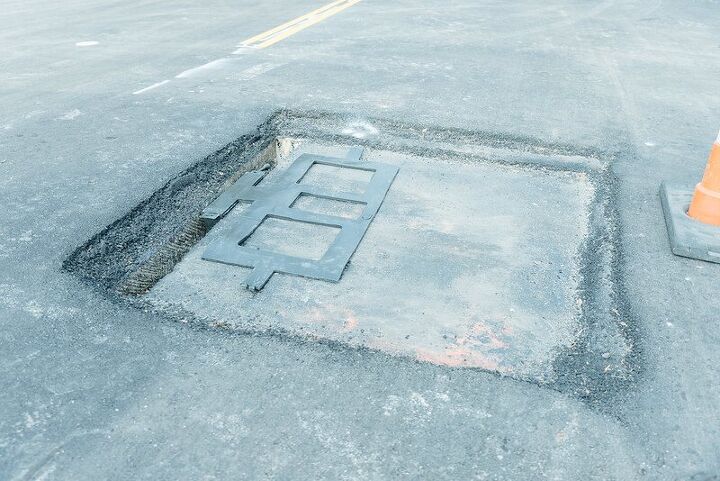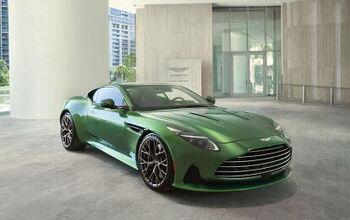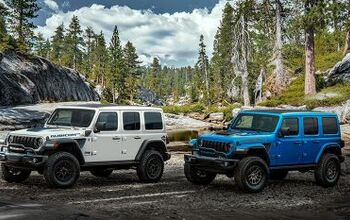Detroit’s Inductive EV Charging Roads: Boon or Boondoggle?

Detroit now has a quarter-mile length of roadway with the ability to charge properly equipped electric vehicles as they drive. While similar programs have been pioneered in Europe, Detroit is the first and only city to do so in the United States. Governor Gretchen Whitmer offered her support when the plan was announced in 2021.
The Michigan Department of Transportation (MDOT) partnered with Electreon Wireless to complete the task as part of a five-year commitment to develop the electric road system (ERS) and expand it around the state. Early plans called for installation on Michigan’s most scenic roadways. But there has been mild pushback from local residents suggesting that this might just be a waste of money.
Considering the general state of Detroit roads, those concerns may be warranted. But city leadership doesn’t want to spoil the grandeur of what’s a very interesting concept.
Leveraging technology from Electreon, MDOT has installed a section of road with inductive-charging coils that will charge electric vehicles (equipped with Electreon receivers) on the go. The electrified slab is located on 14th Street, between Marantette and Dalzelle, right near the trendy Corktown neighborhood and the former ruins of the Michigan Central Station Ford is actively restoring. But it’s hardly on a major thoroughfare and just barely long enough to serve as anything other than a proof of concept.
In fact, the road is primarily going to be used as a testing ground for the relevant technologies. But there are plans to open it to public use within a few years, according to both MDOT and city officials.
Electreon, is an Israel-based firm focused on wireless charging solutions for electric vehicles. The company has launched similar programs thanks to government contracts it has in Israel, Sweden, Italy, and Germany. The company is also a Michigan Central Newlab partner which — along with Google, Ford, Newlab, and The City of Detroit — is trying to expand “mobility innovation ecosystems.”
“This milestone stands as a testament to our collaborative efforts with the State of Michigan and MDOT, the City of Detroit, Michigan Central, Ford, Mcity, Jacobs, Next Energy, DTE, and others. Alongside Michigan’s automotive expertise, we’ll demonstrate how wireless charging unlocks widespread EV adoption, addressing limited range, grid limitations, and battery size and costs,” stated Stefan Tongur, Electreon vice president of business development. “This project paves the way for a zero-emission mobility future, where EVs are the norm, not the exception.”
The road itself is said to be totally safe for pedestrians and vehicles not equipped with the required charging hardware. Only vehicles using Electreon receivers can take advantage of charging segments. Copper coils beneath the road transfer electricity through magnetic fields, charging the vehicle’s battery in a manner similar to how inductive phone chargers function.
“The technology is smart,” Tongur told the Associated Press. “The technology knows who you are — you’re a verified and authentic user — you can get a charge.”
It’s an interesting concept for certain. But one wonders about its true utility and overall cost. Detroit may play host to influential companies with deep pockets. But the city itself isn’t exactly flush with cash and has struggled with reinventing itself. While meaningful strides have been made, balancing the budget remains tricky and this looks like a costly project to upscale.
While Governor Whitmer originally envisioned an inductive charging highway loop situated along tourist destinations, ensuring future travelers driving EVs could tour the Great Lakes without stopping, the more likely scenario involves years of testing with Detroit eventually trying to expand localized charging. Thus far, MDOT has only said it would “begin seeking bids” in 2024 to rebuild part of US-12 (Michigan Avenue), which will see additional inductive charging installed. Unfortunately, it seems like there needs to be a lot of coil-equipped roads for the concept to offer any real benefit to drivers.
Inductive phone charging certainly seemed like a novel convenience. But it is slower to charge devices than simply plugging them in and requires they stay put on a pad where they’re basically impossible to use. Fortunately, Electreon says its design works regardless of whether they’re parked or in motion — though it did install a couple of inductive charging stations in front of Michigan Central Station that are designed for stationary vehicles.
However, the eventual mile of road it has planned will still be maintained by the city and that might be a tall order. U.S. roads have been in rough shape for a while but Detroit has some really nasty segments in desperate need of care.
This is further complicated by the Michigan climate. Harsh, damp winters are absolutely brutal on roads, as the moisture creeps into cracks daily only to expand as the cold converts it into ice. This, combined with usual traffic, wreaks havoc on pavement. Michigan roads also tend to be salty during snowy months, encouraging the underside of vehicles to rust prematurely. One wonders how that might impact Electreon hardware that will need to be equipped beneath EVs.
Then again, the above sounds like an idyllic environment to torture test the systems involved. But going full scale with inductive roads sounds like something we’ll be waiting years on before testing wraps up. Assuming those tests are successful, it’ll probably be several more years before any national effort or standardization takes place.
[Images: Michigan Central; MDOT]
Become a TTAC insider. Get the latest news, features, TTAC takes, and everything else that gets to the truth about cars first by subscribing to our newsletter.

A staunch consumer advocate tracking industry trends and regulation. Before joining TTAC, Matt spent a decade working for marketing and research firms based in NYC. Clients included several of the world’s largest automakers, global tire brands, and aftermarket part suppliers. Dissatisfied with the corporate world and resentful of having to wear suits everyday, he pivoted to writing about cars. Since then, that man has become an ardent supporter of the right-to-repair movement, been interviewed on the auto industry by national radio broadcasts, driven more rental cars than anyone ever should, participated in amateur rallying events, and received the requisite minimum training as sanctioned by the SCCA. Handy with a wrench, Matt grew up surrounded by Detroit auto workers and managed to get a pizza delivery job before he was legally eligible. He later found himself driving box trucks through Manhattan, guaranteeing future sympathy for actual truckers. He continues to conduct research pertaining to the automotive sector as an independent contractor and has since moved back to his native Michigan, closer to where the cars are born. A contrarian, Matt claims to prefer understeer — stating that front and all-wheel drive vehicles cater best to his driving style.
More by Matt Posky
Latest Car Reviews
Read moreLatest Product Reviews
Read moreRecent Comments
- Bd2 Lexus is just a higher trim package Toyota. ^^
- Tassos ONLY consider CIvics or Corollas, in their segment. NO DAMNED Hyundais, Kias, Nissans or esp Mitsus. Not even a Pretend-BMW Mazda. They may look cute but they SUCK.I always recommend Corollas to friends of mine who are not auto enthusiasts, even tho I never owed one, and owned a Civic Hatch 5 speed 1992 for 25 years. MANY follow my advice and are VERY happy. ALmost all are women.friends who believe they are auto enthusiasts would not listen to me anyway, and would never buy a Toyota. They are damned fools, on both counts.
- Tassos since Oct 2016 I drive a 2007 E320 Bluetec and since April 2017 also a 2008 E320 Bluetec.Now I am in my summer palace deep in the Eurozone until end October and drive the 2008.Changing the considerable oils (10 quarts synthetic) twice cost me 80 and 70 euros. Same changes in the US on the 2007 cost me $219 at the dealers and $120 at Firestone.Changing the air filter cost 30 Euros, with labor, and there are two such filters (engine and cabin), and changing the fuel filter only 50 euros, while in the US they asked for... $400. You can safely bet I declined and told them what to do with their gold-plated filter. And when I changed it in Europe, I looked at the old one and it was clean as a whistle.A set of Continentals tires, installed etc, 300 EurosI can't remember anything else for the 2008. For the 2007, a brand new set of manual rec'd tires at Discount Tire with free rotations for life used up the $500 allowance the dealer gave me when I bought it (tires only had 5000 miles left on them then)So, as you can see, I spent less than even if I owned a Lexus instead, and probably less than all these poor devils here that brag about their alleged low cost Datsun-Mitsus and Hyundai-Kias.And that's THETRUTHABOUTCARS. My Cars,
- NJRide These are the Q1 Luxury division salesAudi 44,226Acura 30,373BMW 84,475Genesis 14,777Mercedes 66,000Lexus 78,471Infiniti 13,904Volvo 30,000*Tesla (maybe not luxury but relevant): 125,000?Lincoln 24,894Cadillac 35,451So Cadillac is now stuck as a second-tier player with names like Volvo. Even German 3rd wheel Audi is outselling them. Where to gain sales?Surprisingly a decline of Tesla could boost Cadillac EVs. Tesla sort of is now in the old Buick-Mercury upper middle of the market. If lets say the market stays the same, but another 15-20% leave Tesla I could see some going for a Caddy EV or hybrid, but is the division ready to meet them?In terms of the mainstream luxury brands, Lexus is probably a better benchmark than BMW. Lexus is basically doing a modern interpretation of what Cadillac/upscale Olds/Buick used to completely dominate. But Lexus' only downfall is the lack of emotion, something Cadillac at least used to be good at. The Escalade still has far more styling and brand ID than most of Lexus. So match Lexus' quality but out-do them on comfort and styling. Yes a lot of Lexus buyers may be Toyota or import loyal but there are a lot who are former GM buyers who would "come home" for a better product.In fact, that by and large is the Big 3's problem. In the 80s and 90s they would try to win back "import intenders" and this at least slowed the market share erosion. I feel like around 2000 they gave this up and resorted to a ton of gimmicks before the bankruptcies. So they have dropped from 66% to 37% of the market in a quarter century. Sure they have scaled down their presence and for the last 14 years preserved profit. But in the largest, most prosperous market in the world they are not leading. I mean who would think the Koreans could take almost 10% of the market? But they did because they built and structured products people wanted. (I also think the excess reliance on overseas assembly by the Big 3 hurts them vs more import brands building in US). But the domestics should really be at 60% of their home market and the fact that they are not speaks volumes. Cadillac should not be losing 2-1 to Lexus and BMW.
- Tassos Not my favorite Eldorados. Too much cowbell (fins), the gauges look poor for such an expensive car, the interior has too many shiny bits but does not scream "flagship luxury", and the white on red leather or whatever is rather loud for this car, while it might work in a Corvette. But do not despair, a couple more years and the exterior designs (at least) will sober up, the cowbells will be more discreet and the long, low and wide 60s designs are not far away. If only the interiors would be fit for the price point, and especially a few acres of real wood that also looked real.




































Comments
Join the conversation
Article says smart road so as people drive over it will the be distracted with payment details displaying on their dash or linked phone? And what if an ev driver is close to home doesn't want a charge? Will they be forced to take the charge and fees?
All of this reminds me of street trolleys minus the overhead wires. Or those electric toy race tracks where driven by a wire on the track connecting to an electric toy car. 😀
I almost seems that we are regressing to the period where "The Next Big Thing (tm)" was spinning straw into gold because,"Hey, here's an idea that might work..."